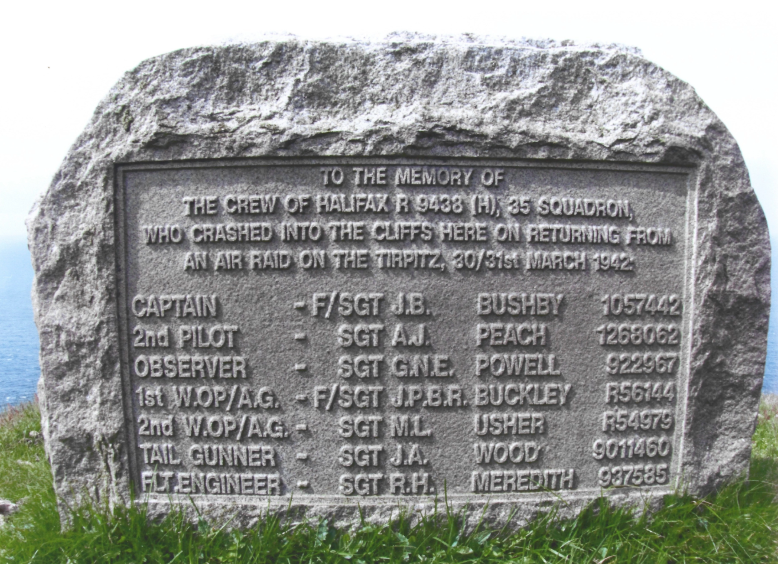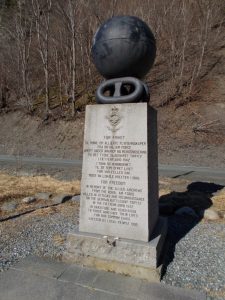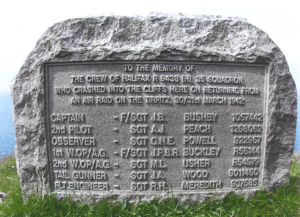
Eighty-two years ago today, on 30 March 1942, Britain launched a desperate attempt. to destroy Nazi Germany’s largest battleship, the Tirpitz. The Allies’ fortunes were at a low ebb at that point in the war, and the Tirpitz, anchored near Trondheim, Norway, posed an immediate threat to Murmansk-bound convoys carrying aid to Soviet Russia. The Royal Air Force despatched 34 Halifax bombers from three squadrons for that difficult and dangerous task. Positioned at forward bases in northern Scotland, they took off in fading daylight for a target at the very limit of their range.
Had the raid been successful, it would be remembered today as among Bomber Command’s most spectacular achievements of the entire war. Instead, it was an utter failure. It was ill-conceived and unpracticed, undertaken by brave men who were insufficiently trained for the purpose, and defeated by adverse weather and the German air defences in Trondheim Fjord. Six of the 34 aircraft were lost, and the raid itself remained shrouded in secrecy until after the war ended. It would be years before the families of the men who perished learned the nature of the raid and the details of their fate. The Tirpitz raid of March 30/31 became a forgotten episode in a long war.
One of those aircraft that failed to return was Halifax R9438, on which my Dad’s cousin Moe Usher was wireless operator and air gunner. Perhaps crippled by anti-aircraft fire, perhaps weighted with ice, R9438 was also very likely running out of fuel. After eight gruelling hours, long after midnight and still 200 km short of the Scottish mainland, the pilot sought to make an emergency landing at the only possible airfield, RAF Sumburgh, at the southern tip of Shetland. On approach from seaward in low cloud, fog, and darkness, he failed to clear the high cliff at Fitful Head.
No one learned what became of R9438 until evidence of it was discovered a week later by crofters calling in their sheep along the top of Fitful Head, nearly 300 metres above the pounding sea below. The difficult and drawn-out identification, recovery, and burial of the crew became an exceptional and long-remembered event in the wartime history of Shetland. Moe and two others are buried in the Commonwealth War Graves plot in Lerwick General Cemetery, the rest are commemorated at the Air Forces Memorial near London for those with no known grave.
This monument near Trondheim, erected in 1985 and topped by one of the unexploded mines, is the only memorial to the March 30/31 raid, and to the two equally unsuccessful ones four weeks later.
This monument at the top of Fitful Head in Shetland, placed by the Dunrossness Community Council in 1995, is the memorial to the crew of Halifax R9438 who lost their lives on 31 March 1942.
Two and a half more years would pass before the RAF finally destroyed the Tirpitz. By that time, the war was nearly over, and the task less urgent.

